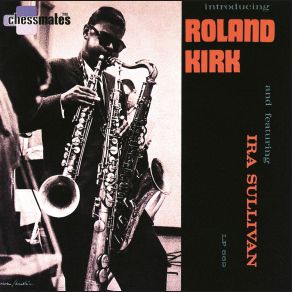Introducing Roland Kirk
Download links and information about Introducing Roland Kirk by Roland Kirk, Ira Sullivan. This album was released in 1995 and it belongs to Jazz genres. It contains 6 tracks with total duration of 37:00 minutes.

|
|
|---|---|
| Artist: | Roland Kirk, Ira Sullivan |
| Release date: | 1995 |
| Genre: | Jazz |
| Tracks: | 6 |
| Duration: | 37:00 |
| Buy it NOW at: | |
| Buy on iTunes $4.99 | |
| Buy on Amazon $4.99 | |
Tracks
[Edit]| No. | Title | Length |
|---|---|---|
| 1. | The Call | 8:42 |
| 2. | Soul Station | 5:26 |
| 3. | Our Waltz | 4:51 |
| 4. | Our Love Is Here to Stay | 4:49 |
| 5. | Spirit Girl | 5:20 |
| 6. | Jack the Ripper | 7:52 |
Details
[Edit]Although the title suggests otherwise, Introducing Roland Kirk is actually Kirk's second long player. Poor distribution kept his debut, Triple Threat, from receiving the attention it deserved until subsequent reissues of the album in the early '70s. On these sides, Kirk is accompanied by a quartet including: Ira Sullivan (trumpet/tenor sax), William Burton (keyboards), Don Garrett (bass), and Sonny Brown (drums). Kirk leads the ensemble with his "triple threat" — consisting of a variation of the soprano sax called a manzello; a stritch, which is a variant of the straight alto saxophone; and a slightly modified tenor sax — all of which he could maneuver simultaneously. Although Kirk's performances are exceedingly reserved on this album, there is little doubt of his technical proficiencies. The three sides penned by Kirk are among the most interesting as they allow for a certain degree of openness that is essential when spotlighting his unique talents. This autonomy yields some exceptional interplay between Kirk and Ira Sullivan — highlighted on "The Call" and "Soul Station." One of the motifs evident throughout Kirk's career involved his ability to personalize pop standards into his very distinctive mold as "Our Love Is Here to Stay" aptly exemplifies. Although some free jazz and avant-garde purists may find Introducing Roland Kirk not challenging enough, it provides a solid basis for his increasingly bombastic post-bop experiments throughout the remainder of the '60s and '70s.